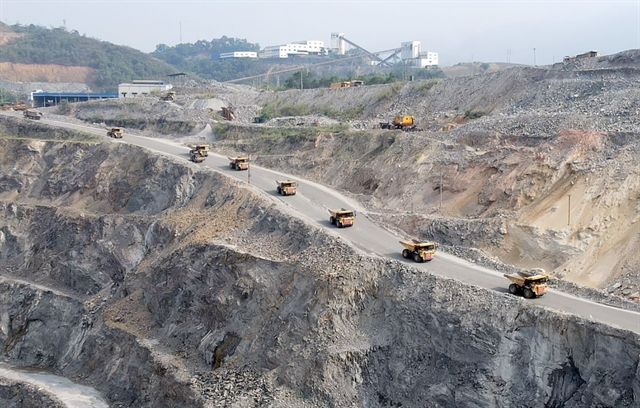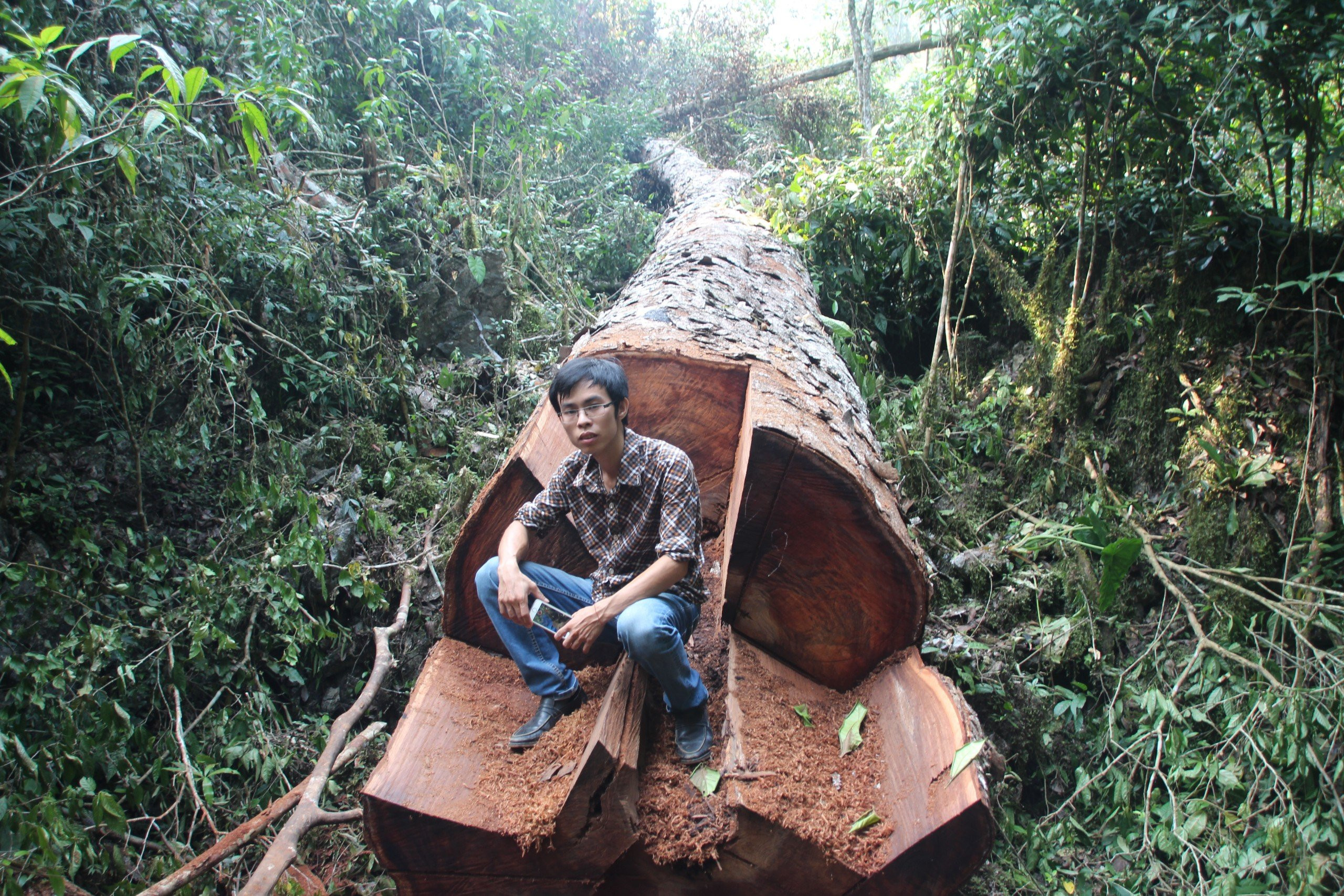Director of the People and Nature Reconciliation (PanNature) Trinh Le Nguyen said mineral resources were public assets owned by the entire people.
Thus, local people in the area that mining activities happened had the right to know specific information about the mine, what type of minerals, and who was assigned to exploit them by the State and local authorities, and what benefits the State, businesses and communities would enjoy from the mining activities, he said.

Tree-felling fiasco: symptom of a deep-rooted problem
We have rarely seen the people of Ha Noi this agitated.
Residents are justly proud of their city, famous for its tree-lined streets, tranquil lakes and graceful French and Vietnamese architecture that they love with a passion best felt when one is away from home.
To wake up one day and see hundreds of the trees they take for granted cut down was an earth-shaking experience for the people. The real horror dawned on them as they realised as many as 6,700 trees had been lined up for this apparently senseless execution.
And in this digital age, the shock and horror went viral on the Internet, especially the social media. It became apparent that it was not just poets and writers and visitors who were charmed by the old trees in Ha Noi; residents from all walks of life felt that they make up a large part of the capital city’s identity and soul.
Authorities tried to explain the project rationale, but this was too little, too late.
We learnt that the “tree-cutting project” was part of a larger US$3.4 million landscaping project that would replace the old and rotten trees with other trees or plants deemed “more suitable.” We were told that the trees posed a danger to pedestrians during the rainy season and that many stood in the way of planned infrastructure projects.
But there was no pacifying the public. From expressing shock and outrage, they turned to action. An online campaign titled “6,700 people for 6,700 trees” took shape. People took to the streets, demanding a halt to the felling. Young people decorated trees with ribbons and signs that said “Don’t Kill Me” or “Save Me.” Scientists, prominent citizens, celebrities all joined the chorus.
The social media was on fire. People could not believe that at least 500 trees had already been chopped down without a single attempt to seek opinions from citizens or experts, and without sound explanations from authorities.
Authorities had to reverse their action last Friday. Several officials were temporarily suspended. Nguyen The Thao, Chairman of the Ha Noi People’s Committee set up a team to investigate the case.
These temporary actions are not enough. People not only feel hurt that part of their living environment was so drastically damaged, but also, more importantly, they were completely left out of the decision making process.

The country’s leadership at all levels have been talking about the need for greater transparency, but the tree-felling shows that it is something that is not often practiced.
Transparency should give people the chance to speak out and raise questions throughout the decision-making process, not after something has been decided. Transparency does not mean actions to simply salvage a situation.
At a meeting held recently on the tree-cutting project(*), scientists and experts expressed anger that they’d not been consulted on the project. A large-scale public project was implemented arbitrarily by the Department of Construction and the People’s Committee, they said.
Professor Nguyen Lan Dung, president of the Viet Nam Society for Biology, said the project violated the Law on Capital City, which stipulates that urban planning activities in four central districts, including landscape planning, must be approved by the Prime Minister.
Professor Nguyen Tien Hiep, director of the Viet Nam Centre for Plant Conservation, urged the city to form a panel of leading scientists and experts who can identify and select trees that are suitable for urban streets.
Other experts questioned the authorities’ decision to chop down trees they claimed were old and infected with diseases without providing concrete evidence. Many of the trees that were chopped down were planted during the French colonial period and it would take years for the new one to grow to that level. In the meantime, citizens would be exposed to a more polluted living environment, they said.
While it is understandable that some trees can pose dangers to pedestrians during the storm season, the solution implemented thus far has been to chop some branches, not fell whole trees on nearly 200 streets!
And why do they have to be chopped down all at once? If some of the trees were not suitable for urban areas, why were they planted in the first place? Why were officials not focusing on planting more trees in new urban areas in order to green them, instead of chopping down those in downtown areas? What’s about the wood from the chopped trees? Who was making money from selling them?
These are straightforward questions that can be asked of any project, and they need answers to show that the process has been transparent.
But two answers give the lie to any transparency claim. When the media posed questions of city officials after streets began looking like construction sites, one astounding response was that “all citizens were in favour of the project.” Really?
Yet another official was quoted as saying there was no need to seek “approval” from the people, because officials were too busy doing many things.
This is the root of the problem, and it runs deep – this attitude that citizens only need to know what officials think they should know, and that decisions on projects affecting the daily lives of citizens can be taken irrespective of the latter’s own feelings and aspirations.
Even after the decision was reversed in response to the uproar, city leaders avoided questions at a press conference held last week to announce the project’s suspension.
There was no apology, and not a single official took the blame. So are we in for another round of tree-felling under another guise?
Authorities will be making yet another mistake if they see this as an isolated problem and continue to think participatory decision-making is a cute idea that has no place in practical governance.
Good, transparent governance is what people demand, and they now have the social media as a platform to air their grievances.
Policies that go against the benefits of the people will invite backlashes. Now, absurd recommendations like the one made several years ago to ban people with small chests from driving motorbikes and another on confiscating vehicles of drunken drivers, will stand exposed in no time.
Getting back to the problem on hand, officials can note that the tree-coverage in Ha Noi is currently at around 2m2/per person, which is quite low compared to Singapore (30.3m2), Seoul (41m2) and Berlin (50m2).
Management of trees and green spaces in general has to be co-ordination among agencies to avoid subcontractors, under pressure to meet infrastructure project deadlines, cutting down trees as a first resort.
In 2010, we celebrated the 1,000th anniversary Ha Noi with great fanfare and pride. It is this pride that is at stake when actions that can deface the city are taken.
(*) The event mentioned in this op-ed was co-organized by PanNature and the Center for Media and Educating Community (MEC) on 23 March 2015.



